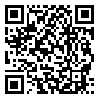Methods: This descriptive - cross sectional study was done in 2003-2004 in shahid Beheshti, Shabih khani , Naghavi , Akhavan and Matini hospithals . All needed information based on: training , research, administrative , medical and legal uses was collected using a checklist. The frequency and percentage of use were calculated and tested via chi-square test to determine the differences between types of use and hospitals.
Findings: The total number of Medical record use was 7590 . The highest research use was 32.8% , ie. 76% of the whole records and the highest use of the records was related to surgical records, 42.06% . Statistical tests indicated significant differences between the interval of patient admission & type of use and also between hospitals and type of use (P<0.0001).
Conclusion: There was no change in the number of medical records use but the research use has been replaced by medical and training uses. Therefore, the retention of medical records is recommended to be more than 15 years in educational hospitals and at least 15 years in non-educational ones.
Introduction: Medical records are valuable documents prepared, kept and used for continuing care of patient, training, research, hospital statistics , legal problems as well as evaluation of care and services rendered by health care providers. Clinical records are the main sources of information and if used properly, one can avoid duplications and wastage of time and money.Received: 2008/11/1 | Published: 2005/10/15
| Rights and permissions | |
 |
This work is licensed under a Creative Commons Attribution-NonCommercial 4.0 International License. |


